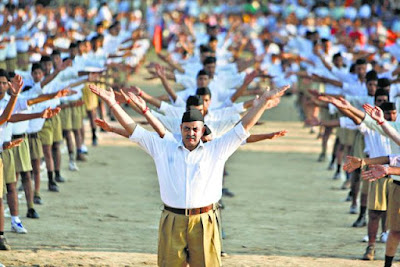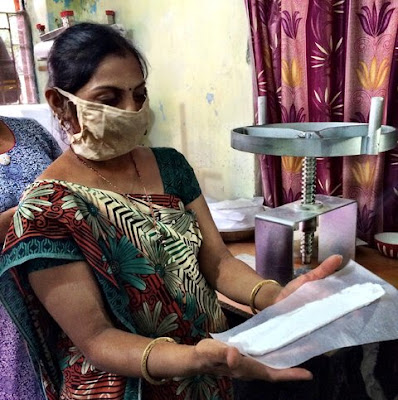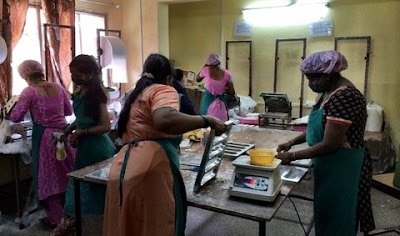In an unequal society, exclusions from the democratic process based on social indicators reflect elitist bias.
Written by Brinda Karat | Published:September 30, 2015 12:15 am
According to the perverted logic of these governments, it is perfectly acceptable to get elected by taking the votes of those who are educationally deprived, but when it is their right to contest elections in their own villages and blocks, they are deemed too ignorant.
Rules to sanction official snooping on WhatsApp, a state government circular that redefines sedition to prevent criticism of the administration, another state government’s defence of an extremist Hindutva organisation implicated in the murder of communist leader Govind Pansare and other progressive rationalists, meat bans in three states, a call to reconsider the issue of reservations — it would appear that a competition is on within the Sangh Parivar in achhe-din India on how best to reshape democracy, as ordained by the wise men in Nagpur.
Authoritarian moves by the right also have a clear elitist bias. It includes diluting the rights of the poor, minorities, oppressed castes and women. Recently, the BJP-led governments in Rajasthan and Haryana have made precisely such moves. The two governments have adopted the most outrageous amendments to their respective state panchayat acts in spite of the judgment of the Punjab and Haryana High Court that stayed the Haryana proposal.
According to these amendments, no one can contest elections for the post of sarpanch or member of the panchayat samiti or zilla parishad if they have not passed Class X. For women and Scheduled Castes, the literacy requirement is middle school. Going by Census 2011, if this is implemented in Haryana, it will mean more than half the population, 56.8 per cent, will be disqualified on the first count, and a shocking 79.76 per cent made ineligible because of the second condition. In Rajasthan, the exclusions are more extensive. Minimum literacy qualifications will disproportionately hit poorer sections.
An argument is advanced that such conditions will encourage people to go to school. This is rubbing salt in deep wounds. Was it Dalits who did not want knowledge when molten lead was poured in their ears? Was it women who chose to be enslaved in their homes by upper-caste patriarchal norms? The burden of historical injustice lies heavy in today’s India precisely because we have not only failed to eliminate injustices but have continued discriminatory practices, reflected in the statistics above. Without free education and the full implementation of the Right to Education Act, amendments such as these are nothing but punishing the poor for their poverty. It also means poor women, who have been denied education, will be excluded from the 50 per cent reservations meant for all women.
According to the perverted logic of these governments, it is perfectly acceptable to get elected by taking the votes of those who are educationally deprived, but when it is their right to contest elections in their own villages and blocks, they are deemed too ignorant. Even more bizarre, these very people who are ineligible to fight panchayat elections are eligible to fight assembly and parliamentary elections. The blatant elitist arrogance, that only those with educational qualifications can serve the people and fulfil their duties as elected representatives, comes at a time when corruption scandals of the rich and famous and highly qualified, including in Rajasthan, have brought shame to India. But the assault does not stop there.
It is common knowledge that farmers, particularly farmers with land under five acres, are caught in a terrible crisis of spiralling debt, driven not least by the increasing cost of farm inputs, while price support for crops remains abysmally low. The need is for a comprehensive package and sustained government intervention, including debt relief, to contain what is clearly an increasing trend in farmer suicides. Instead, these two governments have adopted amendments that disqualify a farmer from contesting if there are pending loan arrears to any banking institution, or if electricity bills are unpaid. By this amendment, only rich farmers or landlords can contest panchayat elections. Yet another condition is the need to have a fully functional toilet, at a time when it is calculated that over one-fourth of households do not have such a facility.
It means that a fundamental democratic right is being subordinated to the implementation of government policy, such as recovery of loans or building toilets. Earlier, some governments had adopted the two-child norm as a condition for contesting elections. It was later withdrawn in some states. In an economically and socially unequal society, exclusion from the democratic process on the basis of social indicators is tampering with the basic structure of the Constitution.
In Rajasthan, the panchayat elections that disqualified as candidates more than half of the population have already been held. If the disqualification had not been in operation, the results, which favoured the ruling party, may also have been different. In Haryana, the elections have been stayed by the Supreme Court, which is at present hearing a petition moved by three women, presently elected members, who will be disqualified as candidates if the amendments are upheld.
For Indian democracy, the implications of such amendments are ominous signs of a takeover of even panchayat institutions by those who have money. Panchayats have an important role to play in critical areas like village plans for development and consent for projects requiring land acquisition. If panchayats are packed with people who are better-off, it will severely impact the decision-making process. It is worth recalling that it was the unlettered Kondh tribal communities of Odisha, and their elected panchayat representatives and gram sabhas, who refused to give consent for a project to one of the most powerful mining companies.
We have seen the way corporations and their representatives are taking over Parliament and state assemblies. The amendments to the panchayat act will facilitate such a takeover in rural areas too. It will be just a matter of time before other BJP-ruled states introduce such anti-democratic measures to subvert panchayat institutions.
A century ago, in many countries, electoral franchise was limited to an exclusive section of male property owners. Citizens’ movements forced a reversal and introduced the concept of universal suffrage, which combines the universal right to vote with the universal right to contest elections. Independent India accepted this basic democratic norm. It is sought to be reversed today.
The writer is a member of the CPM politburo.
Written by Brinda Karat | Published:September 30, 2015 12:15 am
According to the perverted logic of these governments, it is perfectly acceptable to get elected by taking the votes of those who are educationally deprived, but when it is their right to contest elections in their own villages and blocks, they are deemed too ignorant.
Rules to sanction official snooping on WhatsApp, a state government circular that redefines sedition to prevent criticism of the administration, another state government’s defence of an extremist Hindutva organisation implicated in the murder of communist leader Govind Pansare and other progressive rationalists, meat bans in three states, a call to reconsider the issue of reservations — it would appear that a competition is on within the Sangh Parivar in achhe-din India on how best to reshape democracy, as ordained by the wise men in Nagpur.
Authoritarian moves by the right also have a clear elitist bias. It includes diluting the rights of the poor, minorities, oppressed castes and women. Recently, the BJP-led governments in Rajasthan and Haryana have made precisely such moves. The two governments have adopted the most outrageous amendments to their respective state panchayat acts in spite of the judgment of the Punjab and Haryana High Court that stayed the Haryana proposal.
According to these amendments, no one can contest elections for the post of sarpanch or member of the panchayat samiti or zilla parishad if they have not passed Class X. For women and Scheduled Castes, the literacy requirement is middle school. Going by Census 2011, if this is implemented in Haryana, it will mean more than half the population, 56.8 per cent, will be disqualified on the first count, and a shocking 79.76 per cent made ineligible because of the second condition. In Rajasthan, the exclusions are more extensive. Minimum literacy qualifications will disproportionately hit poorer sections.
An argument is advanced that such conditions will encourage people to go to school. This is rubbing salt in deep wounds. Was it Dalits who did not want knowledge when molten lead was poured in their ears? Was it women who chose to be enslaved in their homes by upper-caste patriarchal norms? The burden of historical injustice lies heavy in today’s India precisely because we have not only failed to eliminate injustices but have continued discriminatory practices, reflected in the statistics above. Without free education and the full implementation of the Right to Education Act, amendments such as these are nothing but punishing the poor for their poverty. It also means poor women, who have been denied education, will be excluded from the 50 per cent reservations meant for all women.
According to the perverted logic of these governments, it is perfectly acceptable to get elected by taking the votes of those who are educationally deprived, but when it is their right to contest elections in their own villages and blocks, they are deemed too ignorant. Even more bizarre, these very people who are ineligible to fight panchayat elections are eligible to fight assembly and parliamentary elections. The blatant elitist arrogance, that only those with educational qualifications can serve the people and fulfil their duties as elected representatives, comes at a time when corruption scandals of the rich and famous and highly qualified, including in Rajasthan, have brought shame to India. But the assault does not stop there.
It is common knowledge that farmers, particularly farmers with land under five acres, are caught in a terrible crisis of spiralling debt, driven not least by the increasing cost of farm inputs, while price support for crops remains abysmally low. The need is for a comprehensive package and sustained government intervention, including debt relief, to contain what is clearly an increasing trend in farmer suicides. Instead, these two governments have adopted amendments that disqualify a farmer from contesting if there are pending loan arrears to any banking institution, or if electricity bills are unpaid. By this amendment, only rich farmers or landlords can contest panchayat elections. Yet another condition is the need to have a fully functional toilet, at a time when it is calculated that over one-fourth of households do not have such a facility.
It means that a fundamental democratic right is being subordinated to the implementation of government policy, such as recovery of loans or building toilets. Earlier, some governments had adopted the two-child norm as a condition for contesting elections. It was later withdrawn in some states. In an economically and socially unequal society, exclusion from the democratic process on the basis of social indicators is tampering with the basic structure of the Constitution.
In Rajasthan, the panchayat elections that disqualified as candidates more than half of the population have already been held. If the disqualification had not been in operation, the results, which favoured the ruling party, may also have been different. In Haryana, the elections have been stayed by the Supreme Court, which is at present hearing a petition moved by three women, presently elected members, who will be disqualified as candidates if the amendments are upheld.
For Indian democracy, the implications of such amendments are ominous signs of a takeover of even panchayat institutions by those who have money. Panchayats have an important role to play in critical areas like village plans for development and consent for projects requiring land acquisition. If panchayats are packed with people who are better-off, it will severely impact the decision-making process. It is worth recalling that it was the unlettered Kondh tribal communities of Odisha, and their elected panchayat representatives and gram sabhas, who refused to give consent for a project to one of the most powerful mining companies.
We have seen the way corporations and their representatives are taking over Parliament and state assemblies. The amendments to the panchayat act will facilitate such a takeover in rural areas too. It will be just a matter of time before other BJP-ruled states introduce such anti-democratic measures to subvert panchayat institutions.
A century ago, in many countries, electoral franchise was limited to an exclusive section of male property owners. Citizens’ movements forced a reversal and introduced the concept of universal suffrage, which combines the universal right to vote with the universal right to contest elections. Independent India accepted this basic democratic norm. It is sought to be reversed today.
The writer is a member of the CPM politburo.
Source: indianexpress










